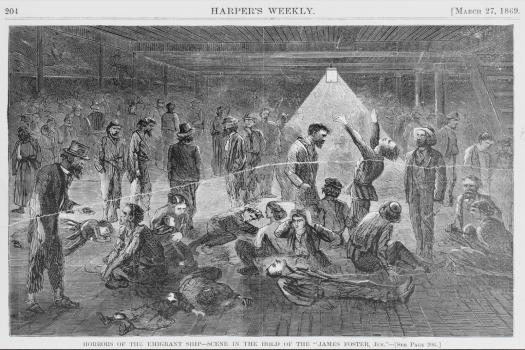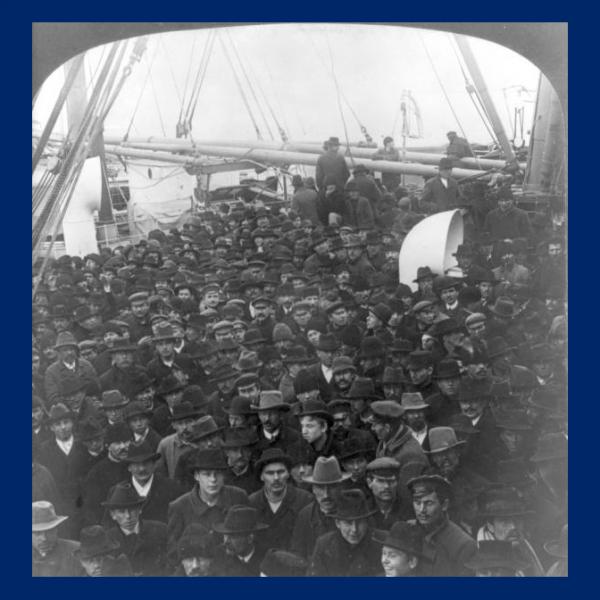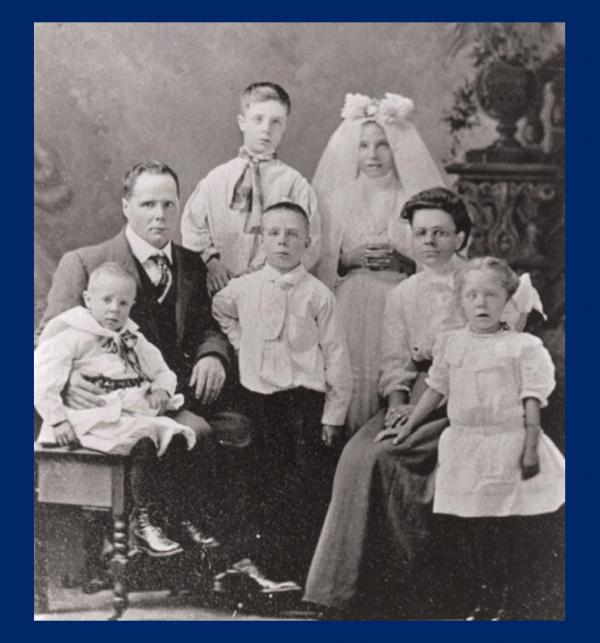How Did they Get Here?
During the entire immigration period up to the late 1930s, all immigrants came to the United States by ship. From the first sailing vessels to paddled steamboats to luxury liners, millions traveled across the the Atlantic and Pacific Ocean to find a new life in America. When they got here, however, transportation might have been a bit different.
Early European settlers to the Upper Peninsula came by canoe rather than ship. French voyageurs and traders began paddling the Great lakes in the early 1600's. By the late 17th century, the first sailing vessels came to the Great Lakes, which made transportation for larger groups of people to the region possible.
When the mining boom began in the 1840's, shipping lanes along the Great Lakes were well established. During the non-winter months, ships full of settlers arrived daily in communities like Copper Harbor, Escanaba, Houghton, Hancock, Marquette, Menominee, Ontonagon and Sault Ste. Marie. This only increased with the opening of the Soo Locks in 1855.
Travel was changed forever with the introduction of the first rail service to the U.P. in the 1850s. Soon it became easier and quicker to transport people to the iron ranges of the U.P., greatly increasing populations. Though some people still arrived by boat, by the beginning of the 20th century, passenger trains to the U.P. became the preferred mode of transport for immigrants.
Today, immigrants to the U.S. and the U.P. arrive by plane, automobile or bus transport, as there is no longer passenger boat or train service to the U.P.
Before the International Bridge was opened in 1962, visitors from Canada to the Upper Peninsula had to come across the St. Mary's River on ferry boats. The one below is the Algoma, which began service in 1905. Typically immigrants took trains from other parts of Ontario and Quebec to Sault Ste. Marie, Canada, and then loaded directly onto ferry boats for the U.S. This was how the Gagnon family (right) from St. Charles, Ontario, came to the U.P. in 1910. Angus Gagnon (on the left), came to work in Munising in 1909 and his wife, Marie Josephine (Couverette), later immigrated with her children.
Images courtesy of the Library of Congress, unless identified otherwise.



